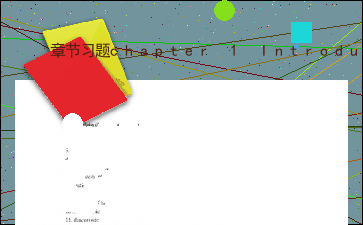章节习题chapter 1 Introduction
以下为《章节习题chapter 1 Introduction》的无排版文字预览,完整格式请下载
下载前请仔细阅读文字预览以及下方图片预览。图片预览是什么样的,下载的文档就是什么样的。
单元习题: Chapter 1 Introduction
I.?Fill in the blanks
1. “A rose by any other name would smell as sweet”. This sentence means that language has the feature of _________.
2.? The reason why an English speaker and a Chinese speaker are not mutually intelligible is because language is culturally ____________.
3.? Language is a system of ________ ________ ________ used for human communication.
4. Linguistics is the scientific study of ________.
5.________ can be simply defined as the study of meaning.
6._____ deals with how Language is acquired, understood and produced.
7.?______ studies the neurological basis of Language development and use in human beings.
8. The symbols are said to be arbitrary because they do not ________ what they represent.
9. Language has many functions. We can use language to talk about language itself. This function is ___________.
10. Modern linguistics is _________ in the sense that the linguist tries to discover what language is rather than lay down some rules for people to observe.
11. One general principle of linguistic analysis is the primacy of ________ over writing.
12. The description of a language as it changes through time is a ___________ study.
13. Saussure put forward two important concepts. __________ refers to the abstract linguistic system shared by all members of a speech community.
II.???? Indicate the following statements true or false. 1. ( ) Language is a system of arbitrary written symbols used for human communication. 2. ( 内容过长,仅展示头部和尾部部分文字预览,全文请查看图片预览。 fly.
What are differences between modern linguistics and traditional grammar?
What is synchronic study? What is diachronic study?
What are design features of human language?
What is competence? What is performance?
How does Saussure distinguish langue and parole?
What functions does language have??
[文章尾部最后300字内容到此结束,中间部分内容请查看底下的图片预览]
以上为《章节习题chapter 1 Introduction》的无排版文字预览,完整格式请下载
下载前请仔细阅读上面文字预览以及下方图片预览。图片预览是什么样的,下载的文档就是什么样的。
图片预览



